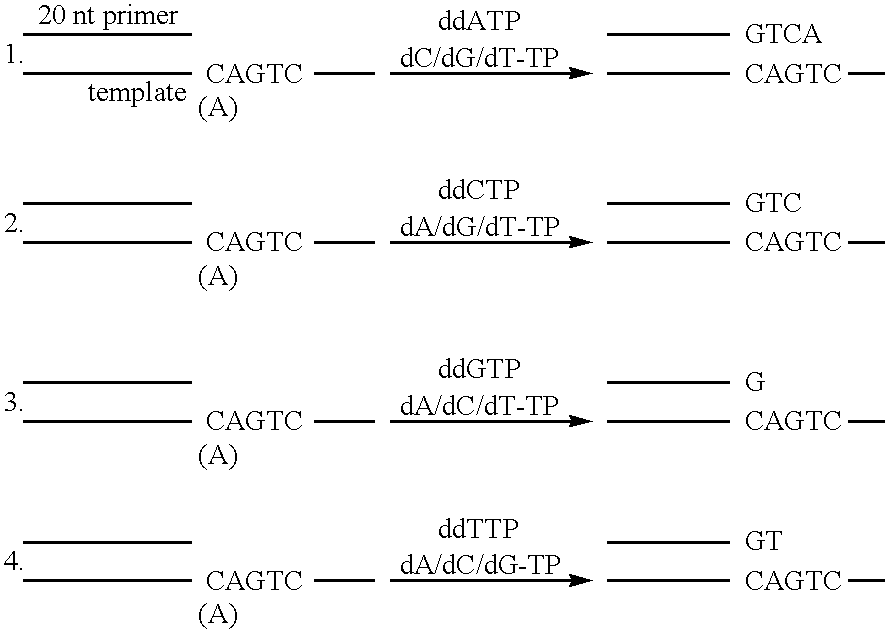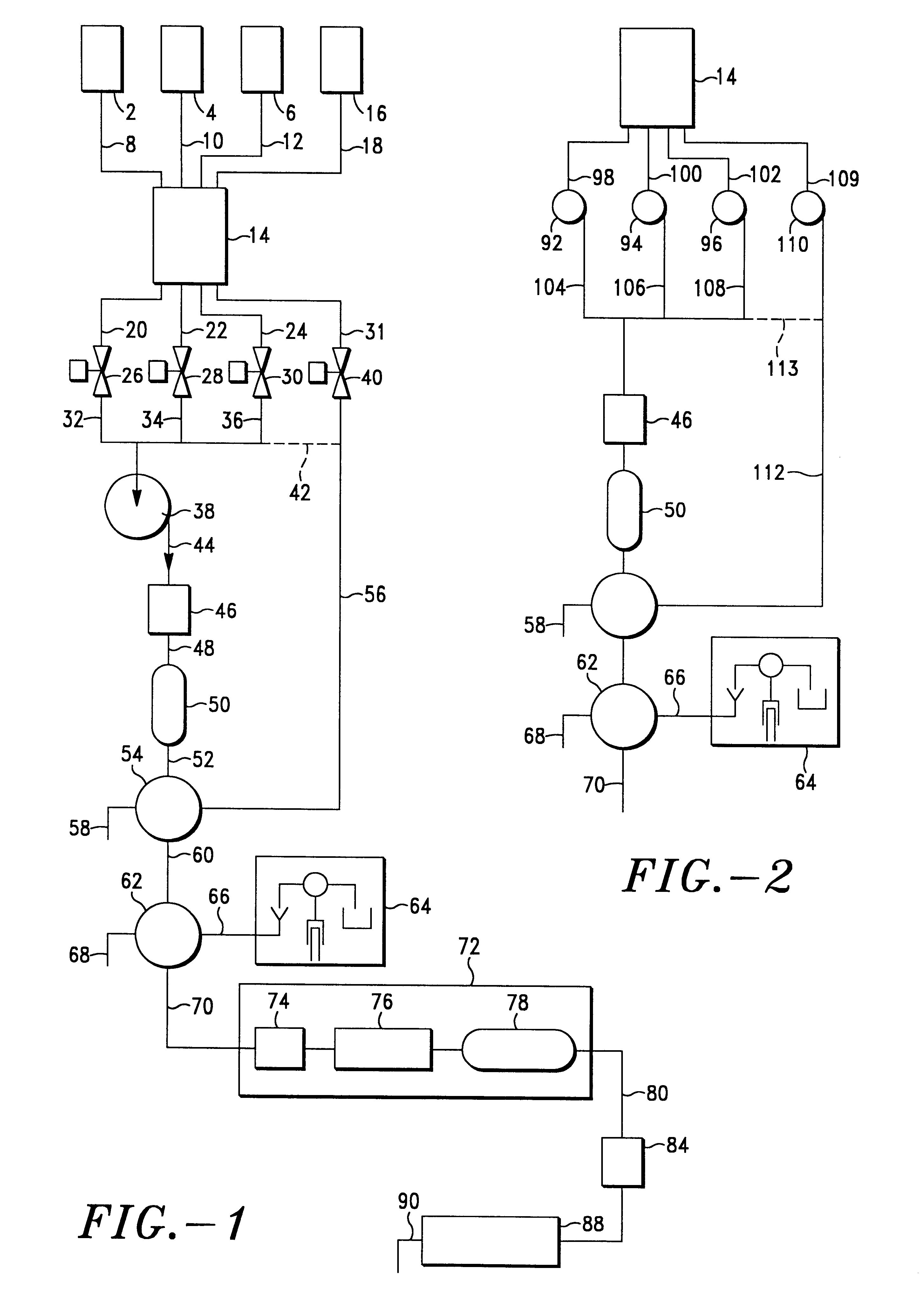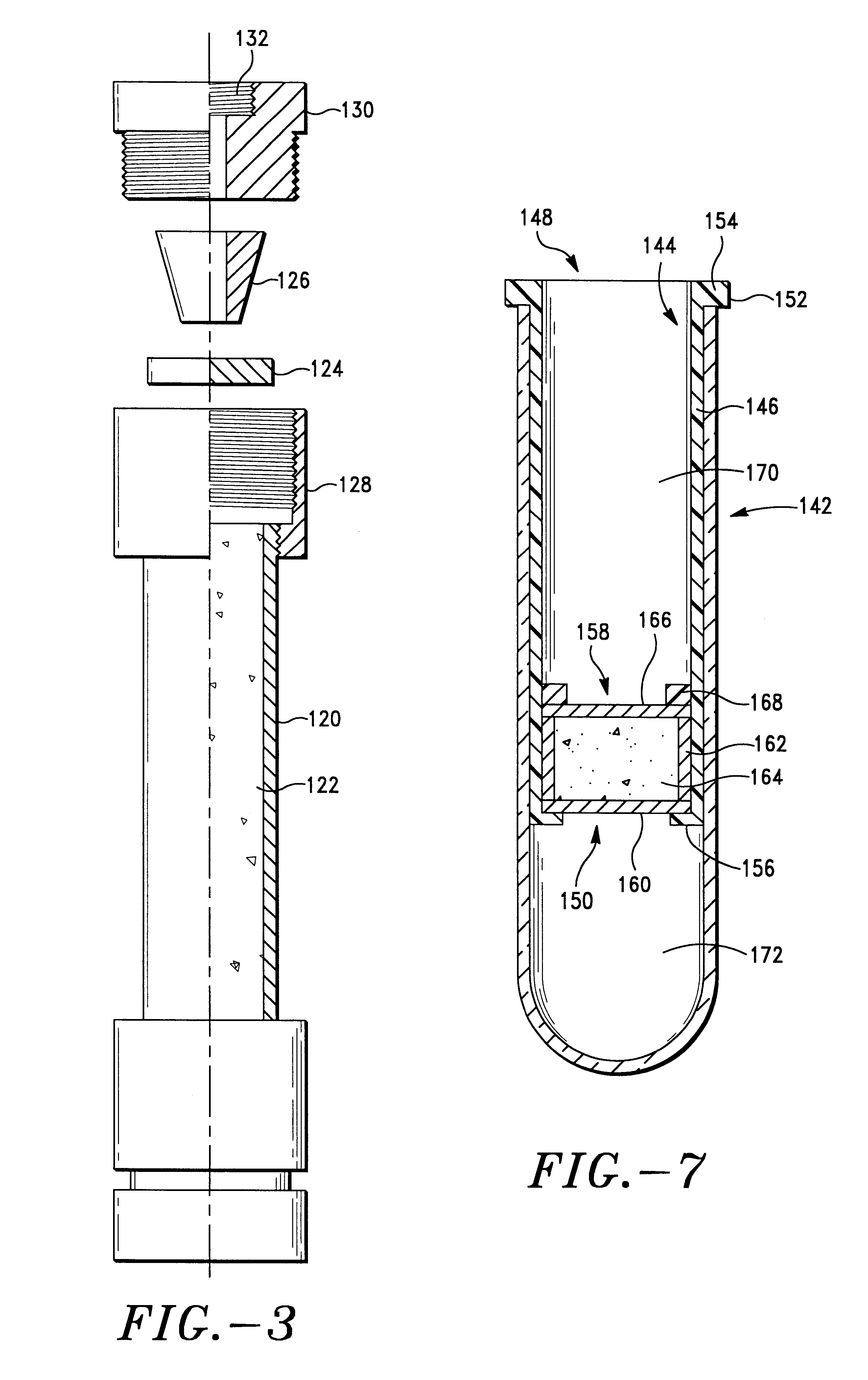Apparatus and method for separating and purifying polynucleotides
a polynucleotide and apparatus technology, applied in the field of apparatus and method for separating and purifying polynucleotides, can solve the problems of inability to achieve many methods are slow, laborious and inefficient, and many methods are incapable of achieving the separation of fragments based on the length of the pair, and yield only minute quantities of separated materials. , to achieve the effect of rapid and efficient base-p
- Summary
- Abstract
- Description
- Claims
- Application Information
AI Technical Summary
Benefits of technology
Problems solved by technology
Method used
Image
Examples
example 1
Size Fractionization of DNA Restriction Fragments with MIPC DNA Fragment Analysis System
One application of the WAVE.RTM. System is accurate and rapid sizing of DNA fragments. This feature can be exploited for the isolation of DNA fragments. Here we describe the method and buffer gradients used for size fractionation and isolation of restriction fragments generated by digestion of pUC 18 with HaeIII. The nine fragments isolated range in size from 80 to 587 base pairs.
Liquid chromatography (LC) is a powerful technique for the separation of nucleic acids due to its high resolving capability, short analysis time, and ease of recovery of DNA fragments for subsequent studies. The WAVE.RTM. System combines the precision of ion-pair reversed-phase LC with automated sampling, data acquisition and reporting functions. Fragments can easily be collected and used in downstream experiments such as subcloning, amplification and sequencing.
Table D shows fragment sizing of pUC 18 plasmid cut with Ha...
example 2
Preparation of Spin Column
A 50 mg portion of resin is added to each spin column (See schematic representation of column in FIG. 7) while pulling a vacuum on the columns. The sides of the columns were tapped to remove resin from the walls. A polyethylene filter was placed on the top of the resin in each vial, followed by a retaining ring, with gentle tapping with a hammer to position the retaining ring securely against the filter. The spin columns were washed with an aqueous solution containing 50% acetonitrile (ACN) and 0.1 M triethylammonium acetate (TEAA). The vials were then washed with an aqueous solution of 25% ACN and 0.1 M TEAA and then with an aqueous solution of 0.1 M TEAA.
example 3
Separation of PUC 18 Msp I with Spin Column
A sample solution was prepared by diluting 35 ml stock pUC 18 Msp I to 1 ml with 0.1 M TEAA (1 ml total volume). A 400 ml aliquot (corresponding to 6.6 mg loaded on the column) was selected. Base pair length separation of the solution was performed using the WAVE separation system (Transgenomic, Inc., Omaha, Nebr.) described in FIGS. 1-3, and the chromatograms obtained for two of the columns are shown in FIG. 22 for the pUC 18 Msp I standard.
An aliquot of the sample solution was pipetted into separate spin columns and left standing for 5 min. Each vial was centrifuged at 5000 rpm for 5 min. Then 400 .mu.l of freshly prepared aqueous solution containing 9.5% ACN and 0.1 M TEAA was pipetted into each spin column, each vial was left standing for 5 min, each vial was centrifuged at 5000 rpm for 5 min, and the filtrate was analyzed using the WAVE separation system. The chromatogram obtained for the eluant is shown in FIG. 23 for the pUC 18 Msp I...
PUM
| Property | Measurement | Unit |
|---|---|---|
| Fraction | aaaaa | aaaaa |
| Fraction | aaaaa | aaaaa |
| Time | aaaaa | aaaaa |
Abstract
Description
Claims
Application Information
 Login to View More
Login to View More - R&D
- Intellectual Property
- Life Sciences
- Materials
- Tech Scout
- Unparalleled Data Quality
- Higher Quality Content
- 60% Fewer Hallucinations
Browse by: Latest US Patents, China's latest patents, Technical Efficacy Thesaurus, Application Domain, Technology Topic, Popular Technical Reports.
© 2025 PatSnap. All rights reserved.Legal|Privacy policy|Modern Slavery Act Transparency Statement|Sitemap|About US| Contact US: help@patsnap.com



